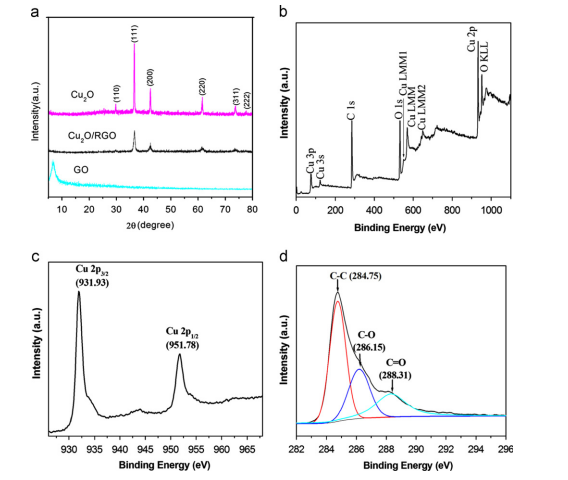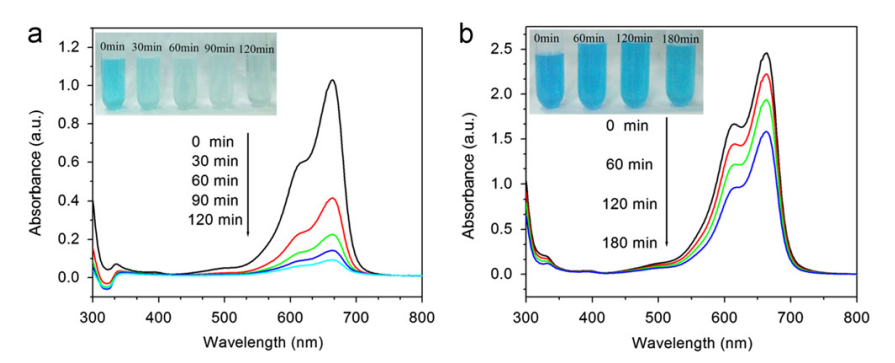Service hotline
+86 18518316054
 Current location : Home page > Resources > Papers > A facile one-pot synthesis of Cu2O/RGO nanocomposite for removal of organic pollutant
Current location : Home page > Resources > Papers > A facile one-pot synthesis of Cu2O/RGO nanocomposite for removal of organic pollutant
Gathering the photocatalysis of semiconductors and the superduper electron transmittability of graphene, graphene-based semiconductor photocatalytic composites are attracting increasing interest of researchers. In this paper, a Cu2O/reduced-graphene-oxide (Cu2O/RGO) nanocomposite was prepared via a facile wet-reduction process, for removal of organic pollutants. The samples were characterized by X-ray diffraction, X-ray photoelectron spectroscopy, scanning electron microscopy, transmission electron microscopy, and UV–vis spectrophotometry. The nanocomposite is composed of Cu2O nanoparticles with sizes of 100–500 nm attached to the RGO sheets. For photodegradation of methylene blue (MB) under visible light, the Cu2O/RGO nanocomposites exhibited greatly enhanced photocatalytic efficiency compared to the pure Cu2O nanoparticles. The enhanced photocatalytic performance was mainly ascribed to the increased adsorptivity to organic dye as well as the efficient charge transportation and separation from Cu2O to RGO.
Photocatalytic property test
The photocatalytic properties of the samples were evaluated by the photodegradation of methylene blue (MB) in water under visible light irradiation from a 300 W Xe lamp equipped with a 420 nm cutoff filter (CEL-HXF300/CEL-HXUV300, China). A specific experimental process is as follows: 80 mg of photocatalyst was suspended in 100 mL of 5.0 × 10-5 M MB aqueous solution under continuous stirring. Before irradiation, the dispersion was stirred in the dark for 2 h to achieve an adsorption–desorption equilibrium between the photocatalyst and MB molecules. Afterwards, the solution was exposed to visible-light irradiation under magnetic stirring at room temperature. At a given illumination time interval, about 3 mL of MB solution was sampled for analyzing the MB concentration, and the absorption spectra of the MB solution was recorded by a UV–vis spectrophotometer (Shimadzu UV2550, distilled water as reference).

. (a) X-ray diffraction patterns of GO, Cu2O nanoparticles and Cu2O/RGO nanocomposite, and (b–d) XPS spectra of Cu2O/RGO nanocomposite.

Evolution of the absorption spectrum of MB solution (5.0 × 10-5 mol/L, 100 mL) in the presence of (a) Cu2O/RGO nanocomposite and (b) Cu2O nanoparticles.